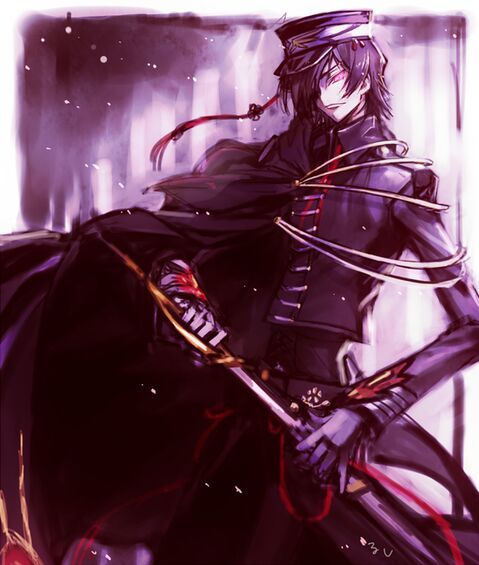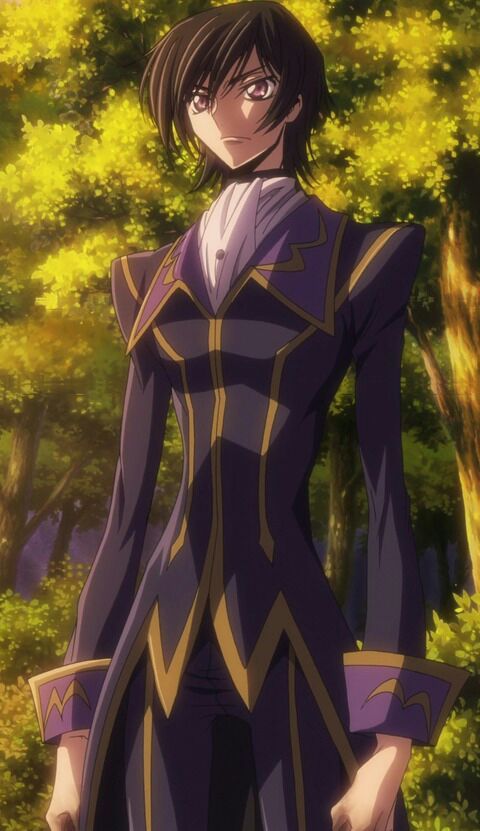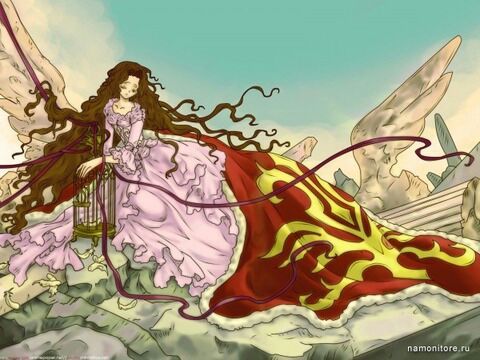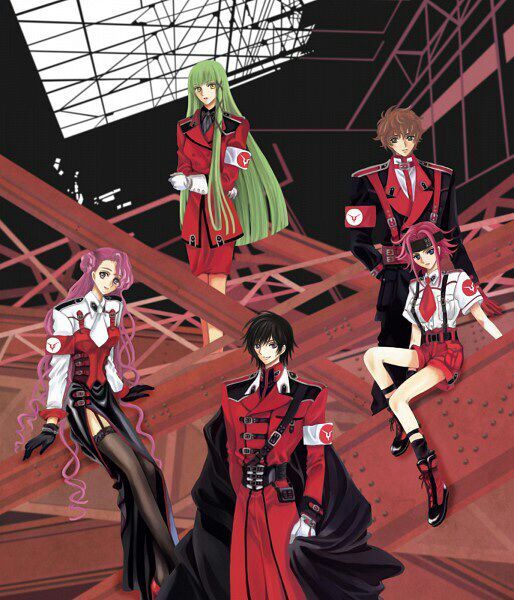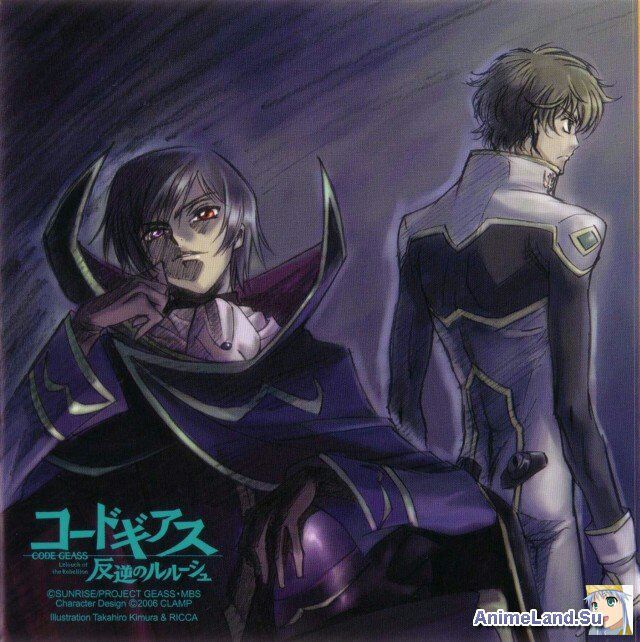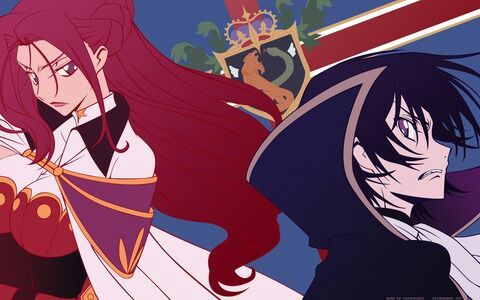российская империя код гиас
Russian Empire (Flight of the Eagle)
Contents
Background: [ ]
The Russian Empire traced their history to the foundation of Kievan Rus’ by the legendary Varangian chieftain, Rurik. The ancient Rus’ states were then split into three smaller kingdoms: Vladimir-Sudzal, Novgorod and Halych-Volhynia, though the Mongol invasions under Batu Khan occured in 1237 AD. As of 2017 a.t.b. before the Britannian invasion, the Russian Empire (as the Union of Soviet Socialist Republics) shared a border with Germania, Great Scandinavia, the Holy Byzantine Empire (Hungarian SSR and Malorussian SSR both share a border with the Byzantine Empire), the Turkic Danishmend Empire in the south, and the Chinese Federation in the East. However, because of the inclusion of the Zhemchuka Autonomous Oblast, Russia through Zhemchuka shares a border with Indonesia, Siam and the Pacific Ocean. Finally, due to Russia’s possession of Alaska, it shares the border with the Holy Britannian Empire.
History: [ ]
The earliest Varangian migration into what is now Russia occured as early as the 800s, with Rurik founding Kievan Rus’. His marriage to Britannian King Eowyn XIII’s sister Fiona vi Britannia strengthened the bond between the Eowynids and the Rurikids for centuries until Britannia’s invasion of Russia when it was the Soviet Union. Rurik’s successors would build up the Kievan state, and it was in 980 AD when Svyatoslav of Kiev formed a coalition with the Kipchak-Cumans, Volga Magyars and Caucasian Hephthalites and destroyed the Khazar Empire. His successor Vladimir of Kiev converted the Rus’ and Slavic population into Byzantine Christianity, and the Varangian Guard’s devotion to Orthodox Christianity enabled neighboring Sweden and Norway to embrace Byzantine Christianity.
However, the existence of the Geass Order was revealed by Vsevolod in 1171 as he launched a campaign to eradicate the Geass Order, though those campaigns usually failed in the end for unknown reasons. However, Kievan Rus’ itself fractured into multiple principalities, with Halych-Volhynia, Novgorod and Vladimir-Sudzal emerging as the three dominant states, before Batu Khan’s invasion of Russia had vassalized the Rus’ states closest to the Golden Horde
Tatar Yoke: [ ]
Batu Khan attacked Rus’ in 1237 with a larger amount of soldiers, starting the period of the Tatar yoke. By 1242, Aleksandr Nevsky had attained his famous victory over the Holy Roman Empire-backed Teutonic Knights in the Battle of the Ice, but chose to collaborate with the Mongols due to the Catholic states’ hostility towards the mainly Orthodox Christian Rus’ state. In 1256 however, Nevsky was assassinated in a botched assassination attempt meant for Sartaq, the current Khan of the Golden Horde. Sartaq’s purge against the pro-Muslim Berke and his associates resulted in the Golden Horde’s path to its eventual Christianization. The Golden Horde and its Rus’ vassals would eventually go on a campaign against Halych-Volhynia, crushing the upstart state in 1260 and liberating the former Byzantine Empire from the Crusaders after 1260. Sartaq’s support of the Byzantines had allowed him to choose Stefan Uros I of Serbia as the new Emperor of the Holy Byzantine Empire. It was through the Serb-ruled Byzantines that Sartaq’s family gradually converted to Orthodox Christianity.
Rise of Muscovy Rus’: [ ]
Muscovy was just a tiny fort by the time Danilo of Muscovy arrived to take control. However, as the Golden Horde led by one of Sartaq’s unnamed successors soon realized that Muscovy could prove to be a viable ally than an enemy, it allowed Muscovite princes to run its own affairs, provided that they pay lip service to the Khan. Ozbeg Khan’s series of intermarriages between the Russian, Mongol, Byzantine (Draculesti, Nemanjic, et al) royal families provided the legitimancy the Golden Horde needed to continue its reign. However, as the Golden Horde began to decline, Muscovy Rus’ began to seize upon its opportunities to expand beyond its realm. Indeed, it was the invasion of the Caucasus by the combined forces of Tamerlane and the Danishmend Empire that proved to be a bane for Muscovy Rus’, but a fatal blow to the Horde, which allowed Muscovy to annex the Crimean Khanate before proceeding to vassalize the Kazan and Astrakhan Khanates. It was at this time that Jogaila, Grand Duchy of Lithuania, opted to marry Sophia of Tver’, cementing Lithuania’s alliance to the Orthodox world.
Ivan IV’s Reign: [ ]
The reign of Ivan IV had its origins in his birth in 1530, just three years before Elizabeth’s birth in 1533. As a young child, he witnessed the deaths of his parents at the hands of domineering boyars. Such tragic events in his childhood had shaped Ivan as a young man when he first began his reign. In 1547, Ivan achieved a seemingly impossible task of rennovating the neglected port of Ivangorod, from which he could conduct his trade with the Baltic states. The first establishment of relations between the Tsardom of Russia and the Kingdom of Britannia in 1558 enabled Ivan and Elizabeth to meet for the first time. Indeed, their secret meetings continued into Britannian territory resulted in a love affair, which brought forth Elizabeth’s pregnancy and her birthing of Sergei/Charles and Vasily/Henry Ivanovich Tudor. Though she never told Ivan of what happened to their children, some of Elizabeth’s suitors plotted to kill the twin boys. When Henry IX succeeded his mother, he displayed the same deadly personality his Russian father possessed: by arresting, torturing and executing his mother’s suitors who wanted him dead.
Russian Warring States Period: [ ]
When Ivan IV died in 1584, most of Muscovy Rus’ had descended into civil war as ambitious boyars struggled to carve out a territory of their own. In the midst of this civil war, the Holy Roman Empire and the Kingdom of Britannia connived to seize the Russian throne. The Holy Roman Empire, buoyed by the desire to Catholicize its eastern neighbors by the sword if necessary, and Britannia under Henry IX, who wanted to install his brother Charles as Tsar of Russia. Unfortunately, the Britannians who were against the Tudor dynasty fought in Russia on the side of Mikhail Romanov, one of which was Vasily Stepanov, the famous Britannian-born Russian commander. (Vasily Stepanov in this case is OTL James Stuart, the man who became King James I of England)
When Mikhail Romanov came to power in 1612, his main focus was to stabilize Russia at the time that the Holy Roman Empire and the Kingdom of Britannia were at war with each other over control of French territories. Europe becomes more sharply divided as Britannia sought to obtain colonies in the New World. With the Thirty Years’ War breaking out, Russia stayed neutral and indeed, had focused on improving its shattered economy for the purpose of financing its conquests of Siberia, Manchuria and Mongolia. Through successive Romanov tsars, Russia’s territory expanded tenfold as said territories, plus the Caucasus and parts of Central Asia came under Tsarist control. In 1710, Russia managed to build its second Baltic port and the most famous of them all, St. Petersburg, under the supervision of Peter the Great. Unfortunately, Peter’s death had plunged Russia into chaos as they struggled to find a successor until the advent of Anna.
During the Seven Years War, Tsar Peter III was lucky to have started his reign before the outbreak. Under his reign, Russia and Britannia formed an unusual alliance against the rest of Europe as they seized territories from their respective territories. With Russian help, Britannia seized all of her enemies’ territories in the New World, while Britannia helped Russia with the additional capture of more Central Asian territories and even brought all of Alaska under Tsarist control. Though both nations shared their victories, they also shared the same problem: revolutionary activity.
The Two Rebellions Era: [ ]
Although they don’t have anything in common, George Washington and Yemelyan Pugachev had launched their revolution with the intention to overthrow ancien regimes in their respective countries. However, there was a major difference in their rebellions. With Benjamin Franklin’s betrayal due to his acceptance of a bribe from the Duke of Britannia resulting in the Continental Army’s disastrous defeat in Yorktown, Pugachev had managed to co-opt the still-alive Ivan VI and made him a figurehead while he became the real man in power. It was during 1783 that the Russian Ghetmanate came into existence as suspected Royalists were brutally massacred by vengeful Pugachevite Cossacks. Washington’s remaining followers then traveled to Europe, where they hoped to disseminate their ideas into the enlightened European population. The majority of Washington’s followers also traveled into Pugachev’s domains and began to help organize democratic institutions although Pugachev himself was not keen on giving up his power too early.
Napoleonic Era: [ ]
Britannia and Russia were allied with each other for the last time in history, as the rise of Napoleon in France had threatened to shift the balance of power in his favor. The French victory in Trafalgar over a combined Russo-Britannian fleet resulted in the French invasion of the British Isles, leading to the well known retreat to Edinburgh and Elizabeth III’s arrest by revolutionary figures. Pugachev’s successors then reorganized the Russian Army in time for the French invasion of Russia itself. Luckily, the combined efforts of anti-Bonapartist countries had finally crushed Napoleon, though Russia had gone behind the Coalition’s backs to seize the Spanish East Indies from Spain, an event which costed her the alliance with the Coalition.
Revolutionary Activies within Russia: [ ]
However, the new conquests brought a new set of problems for the Russian Empire, as subject peoples of non-Slavic origin began to clamour for more rights and responsibilites within the Empire, which was currently dominated by the Cossack warriors. However, the Russian Ghetmanate was not so eager to allow even a tiny amount of autonomy granted to even its fellow Russians, a major factor in the eventual Romanov Restoration of 1861 and Alexander II’s push for industrialization. His assassination in 1881 AD by revolutionaries and the subsequent death of Aleksander Aleksandrovich forced Nicholas Aleksandrovich to take the Tsarist crown. By then, the fire of revolution was quickly spreading fast.
As the Union of Soviet Socialist Republics: [ ]
Holy Patriotic War and the NRS Movement: [ ]
The NRS (Natsional’naya Revolyutsionnaya Soyuz) movement laid its foundations to the Russian Civil War, when the White movement was forced to settle with the non-Slavic territories that usd to be a part of the former Tsarist Empire. As the proto-fascist movement later incorporated dissident Bolsheviks and other nationalists into its fold, the ideology soon emerged as an ultra-nationalist (albeit not Pan-Slavic), Pan-Eurasian movement which sought to replace both the Tsarist and Bolshevik regime with a far-right regime. Aleksei Romanov was slated to become the leader of the NRS movement after the Russian victory over the Britannian Empire in the ruins of Volgograd. Romanov suggested that they maintain the name Soviet in the official name, but would later be used as the Union of Soviet Sovereign Republics, albeit non-Bolshevik.
Three core tenets of the NRS movement was Social Darwinism (intentionally taken from the Britannian ideology of the same kind), Spartanism (or the need to survive in harsh conditions), and National Syndicalism (class cooperation). Its famous flag was the black flag with two hammers and a sword on top, although the eight arrow insignia was also popularized as another potential symbol with a yellow star on top. The NRS regime in the second, non-communist Soviet Union (or Sovereign Union) would carry on the war effort, and with potential allies in the Chinese National Republic and the Indian Federated Democratic Republic, the tide of war would turn against Britannia.
Geography: [ ]
The Russian Empire plus its successors had the largest amount of land in the entire world. Because the borders constantly change all the time, they are unsure of the real amount of land. Within the Soviet (and later on, Sovereign) Union, there are several SSRs.
1) Russian SFSR (several ASSRs were established within the RSFSR, though Zhemchuka was designated as an ASSR in 1965 AD)
7) Sorbian SSR (the West Slavic Sorbs would replace the Poles as the dominant group in Central Europe_
8) Magyar SSR (Carpatho-Ruthenia, Greater Hungary and western Wallachia)
Российская империя код гиас
• 54 год до н.э. или 1 г. a.t.b.
Юлий Цезарь предпринимает попытку вторжения в Британию, однако встречает серьезное сопротивление местных племен, которые избирают своего единого лидера: кельтского короля Иовина. Он становится первым членом Британской императорской семьи.
• 955 г. или 1010 г. a.t.b.
Сакурадайт (в то время ставший известным как «философский камень») был обнаружен неподалеку от Стоунхенджа, на Британских островах. Однако его нехватка не позволила произвести полноценные исследования свойств вещества и его энергетические возможности.
• 1294 г. или 1349 г. a.t.b.
Венецианский купец и мореплаватель Марко Поло, путешествуя по Востоку, достиг Японии, где обнаружил, что у японцев есть крупные залежи сакурадайта. Это открытие ознаменовало выход Японии на мировую арену.
• 1492 г. или 1547 г. a.t.b.
Нанятый британской короной итальянский мореплаватель Христофор Колумб открывает Америку. Начало европейской колониальной экспансии.
• 1575 г. или 1630 г. a.t.b.
• 1620 г. или 1675 г. a.t.b.
Окончательная колонизация Восточного побережья Америки британскими переселенцами.
• 1756 г. или 1811 г. a.t.b.
По итогам Семилетней войны Британия получает все французские колонии в Новом свете, утверждая там своё превосходство.
• 1770-е гг. или 1820-е гг. a.t.b.
В Америке происходит мощное восстание, возглавленное генералом Джорджем Вашингтоном. По поручению короля герцог Британский подкупает Бенджамина Франклина обещаниями титулов и территорий в колониях. Франклин получает титул графа и срывает переговоры с французским королем Людовиком XVI. В результате без международной поддержки американская армия терпит поражение в ходе осады Йорктауна, закончившееся смертью Джорджа Вашингтона. Восстание Вашингтона оканчивается победой Англии и окончанием движения за независимость.
• 1785 г. или 1840 г. a.t.b.
Европа вступает в эпоху революций, затронувшие большинство государств её континентальной части. Однако Британский король Генрих X продолжает удерживать абсолютную монархию.
• 1799 г. или 1854 г. a.t.b.
Французский генерал Наполеон Бонапарт совершает переворот, провозглашая себя новым правителем Франции. Бонапарт, воспользовавшись революционным хаосом, военным путем объединяет страны и создает Европейский Союз, становясь его первым консулом (канцлером).
• 1805 г. или 1860 г. a.t.b.
Флот Наполеона выигрывает Трафальгарское сражение, в котором погибает британский вице-адмирал Горацио Нельсон. Начинается вторжение на Британские острова. Войска Бонапарта оккупируют Лондон.
• 1807 г. или 1862 г. a.t.b.
Королева Елизавета III отступает в Эдинбург, где её задерживают революционные войска, королеву принуждают отречься от престола, что приводит к падению монархии и вступлению Британских островов в состав Евросоюза. Это событие становится известным миру, как «Эдинбургское унижение». Однако сир Рикардо вон Британия и его друг и подчиненный, сир Ричард Гектор, I Рыцарь, доставляют Елизавету III и ее последователей в Новый Свет, где учреждают столицу на восточном берегу Северной Америки и восстанавливают монархическое правление.
• 1812 г. или 1867 г. a.t.b.
Обновленная Британская держава в качестве акта возмездия за утрату родных земель организовывает антинаполеоновскую коалицию и начинает полноценную военную кампанию против ЕС. К коалиции присоединяются Россия, Швеция и Турция. Британия успешно подчиняет себе Канаду.
• 1813 г. или 1868 г. a.t.b.
Елизавета III назначает сира Рикардо вон Британия (своего любовника) наследником после своей смерти. Она заканчивает свое правление «королевой, которая любила на протяжении всей её бурной жизни».
• 1821 г. или 1876 г. a.t.b.
Наполеон проигрывает генеральное сражение при Ватерлоо Сепаратистской армии Германии под командованием фельдмаршала фон Блюхера. Отступая во Францию Бонапарт скоропостижно умирает. По слухам он был отравлен по приказу Елизаветы III. Её предсмертные слова стали знаменитым афоризмом: «Я не забываю обид моей чести».
• 1821-1822 гг. или 1876-1877 гг. a.t.b.
Венский конгресс, в ходе которого фельдмаршал Герхард фон Блюхер добивается сохранения Евросюза и перенесения политического центра в Германию. В состав Евросоюза входят Скандинавия и Турция. Начало политического конфликта ЕС и Российской империи.
• 1853-1856 гг. или 1908-1911 гг. a.t.b.
• 1867 гг. или 1922 гг. a.t.b.
Британия завершает экспансию Южной Америки, захватывая Бразилию. Император усиливает курс на укрепление экономики и улучшение обстановки в захваченных территориях.
• 1890 г. или 1945 г. a.t.b.
• 1898 г. или 1953 г. a.t.b.
Начало Первой Мировой войны между Евросоюзом и Российской империей.
• 1900 г. или 1955 г. a.t.b.
Ихетуаньское восстание в Китае. Свержение династии Цинь и установление династии Тянь. Китай объявляется Федерацией. Китай вступает в Первую Мировую войну на стороне Евросоюза.
• 1907 г. или 1962 г. a.t.b.
Британо-русское соглашение о сотрудничестве и взаимопомощи подписано в Санкт-Петербурге. Вступление Британской империи в Первую Мировую войну на стороне России.
• 1911 г. или 1966 г. a.t.b.
Военный переворот на Ближнем востоке под предводительством Реза Пехлеви и установление Ближневосточной Федерации. Событие получило название Конституционная революция. Федерация выразила поддержку ЕС и КФ в войне. В Берлине был подписано соглашение о создании Тройственного союза.
• 1917 г. или 1972 г. a.t.b.
Февральская революция в России, создание парламента, установление парламентской монархии. Начало мирных переговоров с Евросоюзом.
• 1918 г. или 1973 г. a.t.b.
Парижский конгресс. Россия входит в состав Евросоюза, Средняя Азия отходит Китайской Федерации. С подачи Британии Китай выходит из Союза. Де факто между двумя другими странами бывшего Тройственного союза и Британией продолжается война. Британия заключает мирный договор с Китаем.
• 4 сентября 1933 г. или 1988 г. a.t.b.
Австралийский Ад. Полное уничтожение Австралийского континента.
• 1933 г. или 1988 г. a.t.b.
• 1954 г. или 2009 г. a.t.b.
Марианна ви Британия убита неизвестными террористами. Её дети, Лелуш ви Британия и Наннали ви Британия, отправлены в Японию как политические заложники.
• 1955 г. или 2010 г. a.t.b.
В Японии происходит политический переворот и к власти приходит правительство Генбу Куруруги, которое решает присоединиться к политике Евросоюза по экономическому давлению на Британию – событие получило название Восточного инцидента. ЕС вместе со своими союзниками блокировали порты Британии, надеясь заставить Британию пойти на переговоры.
Священная Британская Империя нападает на Японию, начинается Вторая Тихоокеанская война. В ходе войны впервые применяется новый вид военной техники – найтмеры, с помощью которой Британия всего за месяц завоевывает страну. После смерти премьер-министра Генбу Куруруги, Киотское правительство подписывает мирный договор, Япония становится колонией СБИ под названием 11 сектор.
• 1958 г. или 2013 г. a.t.b.
Россия, желая забрать себе часть Средней Азии, переходит к конфронтации с Китаем, между двумя соседними странами повышается напряжённость, перерастающая в локальные военные конфликты.
• 1959 г. или 2014 г. a.t.b.
• 1961 г. или 2016 г. a.t.b.
Евросоюз вынуждает Россию подписать пакт о ненападении с Китаем. Отношения между Россией и Союзом накаляются.
• 1961 г. или 2016 г. a.t.b.
Чёрное восстание в 11 секторе. Убийство принцессы Юфимии ли Британии террористом Зеро.
• август 1962 г. или 2017 г. a.t.b.
Священная Британская Империя совершает высадку в Исландии. Несмотря на лёгкую победу, только к декабрю Император провозгласил её 17 сектором из-за ожесточённой борьбы за Рейкьявик, продолжавшейся несколько месяцев.
• сентябрь 1962 г. или 2017 г. a.t.b.
Священная Британская Империя начинает войну против Ближневосточной Федерации. Европейский Союз принимает участие в войне против Британии. Война длилась всего полтора месяца и закончилась к середине октября. Британия одержала решительную победу, несмотря на ожесточённое сопротивление, и Ближневосточная Федерация стала 15 сектором.
• октябрь 1962 г. или 2017 г. a.t.b.
ЮАР выходит из состава ЕС и присоединяется к Священной Британской Империи на правах автономной области.
• октябрь 1962 г. или 2017 г. a.t.b.
Священная Британская Империя начинает войну за Британские острова. К концу месяца им удаётся одержать нелёгкую дипломатическую победу – принцу Шнайзелю удаётся убедить президента Франции отдать ему Альбион. Он подписывает соглашение и уходит в отставку.
• октябрь 1962 г. или 2017 г. a.t.b.
В Германии раскрыт заговор и предотвращён государственный переворот. Арестовано более десяти офицеров старшего командного состава во главе с генералом Конрадом Штерном.
• ноябрь 1962 г. или 2017 г. a.t.b.
Государственный переворот во Франции. Новым президентом становится полковник Арториас Артуа.
• ноябрь 1962 г. или 2017 г. a.t.b.
Убит Император Георгий. Несмотря на то, что подозрения, павшие на британского посла, не оправдались, попытки налаживания отношений между Россией и Британией потерпели крах.
• 1962 г. или 2017 г. a.t.b.
• 1962 г. или 2017 г. a.t.b.
Убийство 99-го императора Лелуша Британского лидером ОЧР Зеро.
Наналли Британская становится 100-й императрицей СБИ.
